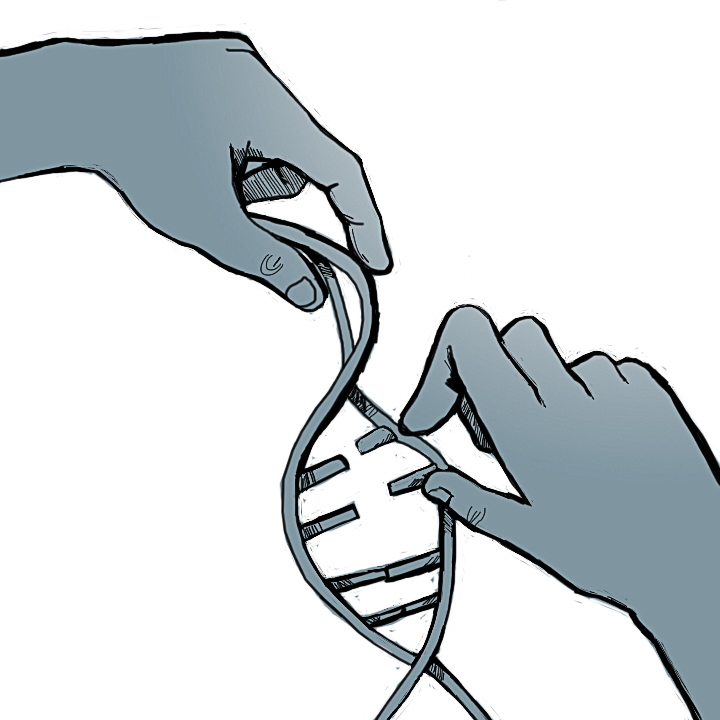A recent study details a new technique that facilitates safer gene-editing therapies.
A multidisciplinary team of researchers developed a new technique, CHAMP, for catching mistakes made by the genome-editing tool CRISPR. This technique could help pave the way for personalized genomic medicine. The researchers published their work in the peer-reviewed journal Cell on June 29.
CRISPR, first discovered in the late 1980s, stands for Clustered Regularly Interspaced Short Palindromic Repeats and refers to short, repeating DNA sequences in bacteria and archaea that are part of an immune defense system for recognizing and destroying invading viruses’ genomes. A decade later, researchers found that CRISPR worked through an RNA-protein complex that recognizes specific viral DNA sequences, as specified by the RNA sequence, and cuts it in viruses. Scientists soon realized that they could use CRISPR as a powerful tool to make changes to the human genome.
“They realized that if you can take this protein and put it in human cells, and give it a piece of RNA that targets the human genome, that protein becomes a precision scalpel directed with great ease to cut anywhere you want,” said Ilya Finkelstein, assistant professor of molecular biosciences and last author of the study. “Now we have, for the first time ever, a programmable, easy-to-use DNA cutting machine.”
In the future, CRISPR could be used to treat or prevent diseases with a genetic basis, such as cancer and Huntington’s disease, by opening and modifying the genome. It’s already been used to favorably edit crops, such as mushrooms, and clinical trials on humans began in China in 2016.
However, there are problems with using CRISPR on human genes. The RNA-protein complex may bind to and edit the wrong genes, resulting in what are known as off-target effects, which can cause cancer or other health problems. Another concern is that CRISPR therapy would have to be highly personalized to account for different off-target effects in each individual.
“The ideal scenario for editing our own genomes would be to have a perfect scalpel that can be directed with great precision against any genomic sequence,” Finkelstein said. “In reality, nothing is perfect. You can imagine that if you’re trying to edit the human genome, cutting in the wrong place can be as disastrous as not cutting at all.”
The researchers set out to discover off-target effects specific to one person’s genome.
“If you also end up editing some other gene that’s closely related, you’ve fixed one problem to have another one arise in its place,” said Stephen Jones, molecular biosciences postdoctoral researcher and co-first author of the study. “Our goal was to say how can we determine these off-target sites where we’re not trying to hit.”
The researchers took glass slides containing DNA that had already been sequenced through next-generation sequencing. Then, they chemically prepared the slides, added a fluorescent CRISPR protein and imaged the resulting fluorescent spots of CRISPR-bound DNA with a specialized microscope. This determined the likelihood and location of potential off-target effects, tailored to each DNA sequence.
“We tried it for different sets of conditions, such as increasing concentrations of CRISPR proteins,” said John Hawkins, computational science, engineering and mathematics graduate student and co-first author of the paper. “At each, we’ll see how this CRISPR protein interacts with our DNA libraries, both artificially-designed libraries and full genomes.”
According to Finkelstein, one of the research team’s strengths is the wide range of member expertise, including backgrounds in engineering, biochemistry and more. He added that CRISPR, funded initially by a National Science Foundation grant, is an example of the merits of basic research and its funding.
Down the road, this technology could be used to test for off-target effects involved with using a specific protein on a per-patient basis, Finkelstein said. In the future, researchers will work toward identifying which CRISPR systems are best for certain applications and improving on existing ones.
“The idea is to design the next generation of genome editing tools that could mitigate the risk of inadvertently causing mutations that we don’t know, frankly, what they can do,” Finkelstein said.















